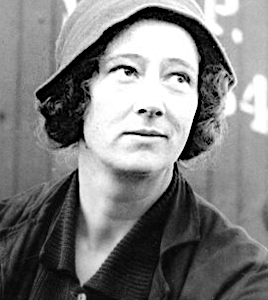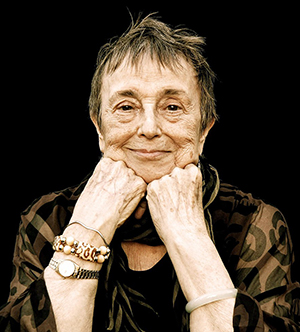
Camera Craft was a monthly American magazine subtitled "A photographic monthly". [1] [2]

Camera Craft was a monthly American magazine subtitled "A photographic monthly". [1] [2]
San Francisco-based Camera Craft began publication with the vol. 1, no. 1, May 1900 issue and ceased publication with vol. 49, no. 3, Mar. 1942 issue, when it was absorbed by American Photography magazine. [3]
It was devoted to practical photography illustrated with photos and each issue contained a photographic art print.
Camera Craft was the official organ of the Photographers' Association of California from November 1922 until January 1925, and subsequently of other similar organisations. It was edited by Fayette J. Clute of the Camera Craft Publishing Co. in San Francisco.
It gave space also to reports of the International Photographic Association and advertisements for cameras, camera equipment, services and supplies for the working photographer. The magazine was a significant outlet for such writers on the medium as William Mortensen who promoted Pictorialism, and Ansel Adams who argued for a Purist approach to the medium. In 1934 Adams published a series of what he announced were ‘provocative’ articles on photographic technique in Camera Craft and the next year published his first technical book, Making a Photograph (1935). [4] Other significant contributors were Imogen Cunningham, John Paul Edwards, Willard Van Dyke and Edward Weston. [3]

Ansel Easton Adams was an American landscape photographer and environmentalist known for his black-and-white images of the American West. He helped found Group f/64, an association of photographers advocating "pure" photography which favored sharp focus and the use of the full tonal range of a photograph. He and Fred Archer developed an exacting system of image-making called the Zone System, a method of achieving a desired final print through a deeply technical understanding of how tonal range is recorded and developed during exposure, negative development, and printing. The resulting clarity and depth of such images characterized his photography.

Group f/64 or f.64 was a group founded by seven 20th-century San Francisco Bay Area photographers who shared a common photographic style characterized by sharply focused and carefully framed images seen through a particularly Western (U.S.) viewpoint. In part, they formed in opposition to the pictorialist photographic style that had dominated much of the early 20th century, but moreover, they wanted to promote a new modernist aesthetic that was based on precisely exposed images of natural forms and found objects.

Imogen Cunningham was an American photographer known for her botanical photography, nudes, and industrial landscapes. Cunningham was a member of the California-based Group f/64, known for its dedication to the sharp-focus rendition of simple subjects.

Edward Henry Weston was a 20th-century American photographer. He has been called "one of the most innovative and influential American photographers" and "one of the masters of 20th century photography." Over the course of his 40-year career Weston photographed an increasingly expansive set of subjects, including landscapes, still-lifes, nudes, portraits, genre scenes and even whimsical parodies. It is said that he developed a "quintessentially American, and especially Californian, approach to modern photography" because of his focus on the people and places of the American West. In 1937 Weston was the first photographer to receive a Guggenheim Fellowship, and over the next two years he produced nearly 1,400 negatives using his 8 × 10 view camera. Some of his most famous photographs were taken of the trees and rocks at Point Lobos, California, near where he lived for many years.
Pure photography or straight photography refers to photography that attempts to depict a scene or subject in sharp focus and detail, in accordance with the qualities that distinguish photography from other visual media, particularly painting. Originating as early as 1904, the term was used by critic Sadakichi Hartmann in the magazine Camera Work, and later promoted by its editor, Alfred Stieglitz, as a more pure form of photography than Pictorialism. Once popularized by Stieglitz and other notable photographers, such as Paul Strand, it later became a hallmark of Western photographers, such as Edward Weston, Ansel Adams and others.

Ruth Bernhard was a German-born American photographer.

Nancy Wynne Newhall was an American photography critic. She is best known for writing the text to accompany photographs by Ansel Adams and Edward Weston, but was also a widely published writer on photography, conservation, and American culture.
Kurt Edward Fishback is an American photographer noted for his portraits of other artists and photographers. Kurt was born in Sacramento, CA in 1942. Son of photographer Glen Fishback and namesake of photographer Edward Weston, he was exposed to art photography at an early age as his father's friends included Edward Weston, Ansel Adams and Wynn Bullock. Kurt studied art at Sacramento City College, San Francisco Art Institute, Cornell University and UC Davis where he received his Master of Fine Arts Degree studying with Robert Arneson, Roy DeForest, William Wiley and Manuel Neri. Ceramic Sculpture was the first medium that gained him high visibility in the Art World. Kurt took up photography in 1962 when he asked his Father to teach him. After finishing graduate work and teaching fine art media at several colleges, Kurt was asked to teach at his father's school of photography in Sacramento. The series of artist portraits which now number over 250 were begun in 1979.

Laura Adams Armer was an American artist and writer. In 1932, her novel Waterless Mountain won the Newbery Medal. She was also an early photographer in the San Francisco Bay Area.
Pirkle Jones was an American documentary photographer and educator.

Sonya Noskowiak was a 20th-century German-American photographer and member of the San Francisco photography collective Group f/64 that included Ansel Adams and Edward Weston. She is considered an important figure in one of the great photographic movements of the twewntieth century. Throughout her career, Noskowiak photographed landscapes, still lifes, and portraits. Her most well-known, though unacknowledged, portraits are of the author John Steinbeck. In 1936, Noskowiak was awarded a prize at the annual exhibition of the San Francisco Society of Women Artists. She was also represented in the San Francisco Museum of Art’s “Scenes from San Francisco” exhibit in 1939. Ten years before her death, Noskowiak's work was included in a WPA exhibition at the Oakland Museum in Oakland, California.

Consuelo Delesseps Kanaga was an American photographer and writer who became well known for her photographs of African-Americans.
Alma Ruth Lavenson was an American photographer active in the 1920s and 1930s. She worked with and was a close friend of Ansel Adams, Imogen Cunningham, Edward Weston and other photographic masters of the period.
John Paul Edwards (1884–1968) was an American photographer and a member of the Group f/64.
Charles Cameron Macauley was a photographer, filmmaker and educator noted for his prize winning still photographs, his ethnographic films and his expertise on historic films and photographs. His career spanned over 75 years.

John Wimberley is an American fine art photographer, known for his technical mastery and the spiritual dimension of his imagery. His bodies of work span more than five decades and include black and white landscapes and human figures, as well as mining camps and Native American rock art from the American West. More recently he switched to digital color photography of the rock art sites he has been exploring for more than twenty years.

Morley Baer, an American photographer and teacher, was born in Toledo, Ohio. Baer was head of the photography department at the San Francisco Art Institute, and known for his photographs of San Francisco's "Painted Ladies" Victorian houses, California buildings, landscape and seascapes.
Willard "Herc" Detering Morgan was a photographer, writer, editor, and educator and the husband of photographer Barbara Morgan, known for her documentation of Martha Graham's dances.

Dody Weston Thompson was a 20th-century American photographer and chronicler of the history and craft of photography. She learned the art in 1947 and developed her own expression of “straight” or realistic photography, the style that emerged in Northern California in the 1930s. Dody worked closely with contemporary icons Edward Weston, Brett Weston and Ansel Adams during the late 1940s and through the 1950s, with additional collaboration with Brett Weston in the 1980s.

Zoe Lowenthal Brown was an American photographer, painter, technical writer and editor. Her work as a photographer has been affiliated with Minor White.
{{citation}}: CS1 maint: multiple names: authors list (link)